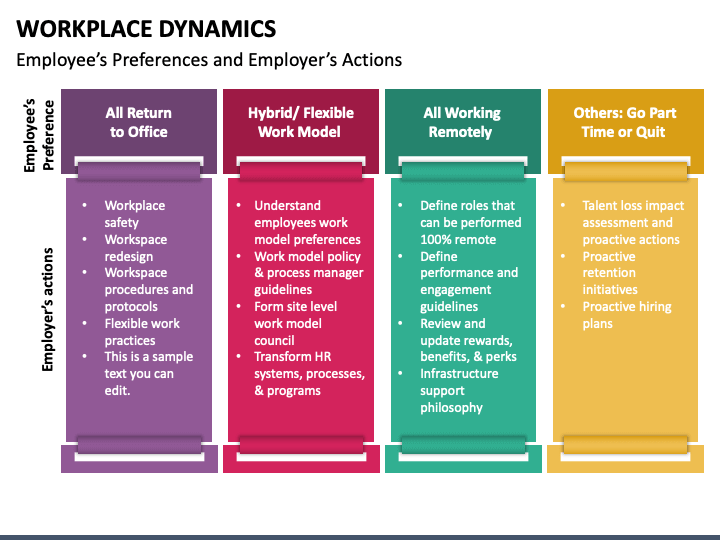
Navigating Success: The Essence of Adaptable Workplace Dynamics
In the fast-paced landscape of contemporary workplaces, adaptability is key to success. Explore the strategies and dynamics that define adaptable workplaces, shaping a resilient and thriving professional environment.
Adaptable Workplace Dynamics: A Gateway to Success
To delve deeper into the dynamics of adaptable workplaces, visit Adaptable Workplace Dynamics. This link provides valuable insights into strategies and practices that foster adaptability, creating a workplace primed for success.
Embracing Change as a Constant
Adaptable workplaces understand that change is not a sporadic event but a constant in the modern business landscape. Whether prompted by market shifts, technological advancements, or internal restructuring, the ability to embrace and navigate change is a hallmark of successful organizations.
Flexible Work Arrangements for Employee Empowerment
In the realm of adaptable workplaces, flexibility is not just a perk but a strategic approach to workforce management. Offering flexible work arrangements, including remote options and flexible hours, empowers employees to balance work and life commitments, fostering a motivated and engaged workforce.
Adaptive Leadership: Navigating Uncertainty
Adaptable workplaces are led by individuals who excel in adaptive leadership. In times of uncertainty, adaptive leaders guide their teams with resilience and a proactive mindset. They instill a culture that embraces change as an opportunity for growth, inspiring innovation and creativity.
Technology Integration for Seamless Operations
In the digital era, adaptable workplaces leverage technology as a catalyst for seamless operations. From collaborative tools to project management platforms, technology integration enhances communication, facilitates remote work, and ensures the agility needed to respond to evolving business demands.
Continuous Learning Cultures for Skill Evolution
In adaptable workplaces, learning is not confined to onboarding or periodic training sessions. A continuous learning culture prevails, encouraging employees to upskill and stay abreast of industry trends. This commitment to skill evolution enhances individual and organizational adaptability.
Collaboration Across Departments and Hierarchies
Adaptability thrives in environments where collaboration transcends departmental and hierarchical boundaries. Adaptable workplaces foster a culture of open communication, breaking down silos and encouraging cross-functional collaboration. This collaborative spirit enhances problem-solving and innovation.
Agile Decision-Making Processes
Adaptable workplaces rely on agile decision-making processes. Hierarchies are flattened, and decision-making is decentralized to empower teams. Quick, informed decisions become the norm, allowing the organization to respond promptly to opportunities and challenges.
Employee Wellbeing as a Strategic Priority
Recognizing that resilient employees contribute to an adaptable workplace, organizations prioritize employee wellbeing as a strategic imperative. Wellness programs, mental health support, and initiatives promoting work-life balance ensure that employees are equipped to navigate challenges with a positive mindset.
Diversity and Inclusion as Cornerstones of Adaptability
Adaptable workplaces recognize the strength in diversity. Inclusive environments, where diverse perspectives are valued, lead to innovative problem-solving and a broader range of insights. Embracing diversity and inclusion is not just a moral imperative but a strategic advantage in navigating change.
Conclusion: Adaptable Workplaces, Sustainable Success
In conclusion, adaptable workplace dynamics are not just a response to external forces; they are a proactive strategy for sustainable success. By embracing change, fostering flexible work arrangements, and nurturing a culture of continuous learning, organizations create environments where adaptability becomes ingrained in their DNA. To explore further insights into the dynamics of adaptable workplaces, visit Adaptable Workplace Dynamics.
